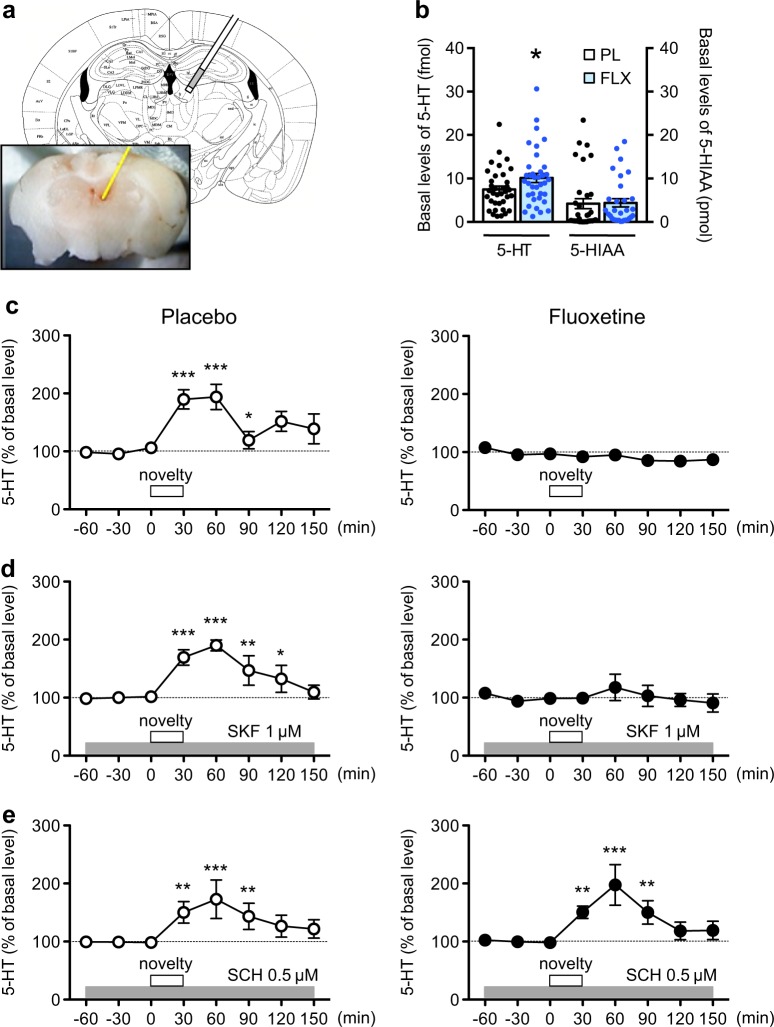Fig. 2.
Effects of chronic fluoxetine treatment on 5-HT response to novelty stress. a Representative location of a microdialysis probe placed in the mouse dentate gyrus. The end of the dialysis probe is close to the habenula, but the end of the probe indicated with white color is inactive area. b Basal values of extracellular 5-HT and 5-HIAA contents in dialysates from the dentate gyrus of mice treated with the placebo (PL) or fluoxetine (FLX; 15 mg/kg/day for 14 days) pellet. Data are expressed as mean ± SEM. *p < 0.05 vs. the placebo group; Student’s t test. c Effects of novelty stress on 5-HT levels in dialysates from the dentate gyrus of mice treated with placebo (n = 5) or fluoxetine (n = 5). The open squares indicate the period (30 min) of novelty stress. d Effects of a local infusion of a D1 receptor agonist, R(+)-SKF81297 (1 µM), into the dentate gyrus on the 5-HT response to novelty stress in mice treated with placebo (n = 5) or fluoxetine (n = 5). e Effects of a local infusion of a D1 receptor antagonist, SCH23390 (0.5 µM), on the 5-HT response to novelty stress in mice treated with placebo (n = 5) or fluoxetine (n = 6). The data are expressed as mean ± SEM. *p < 0.05, **p < 0.01, ***p < 0.001 vs. the basal levels of dopamine in the same group

